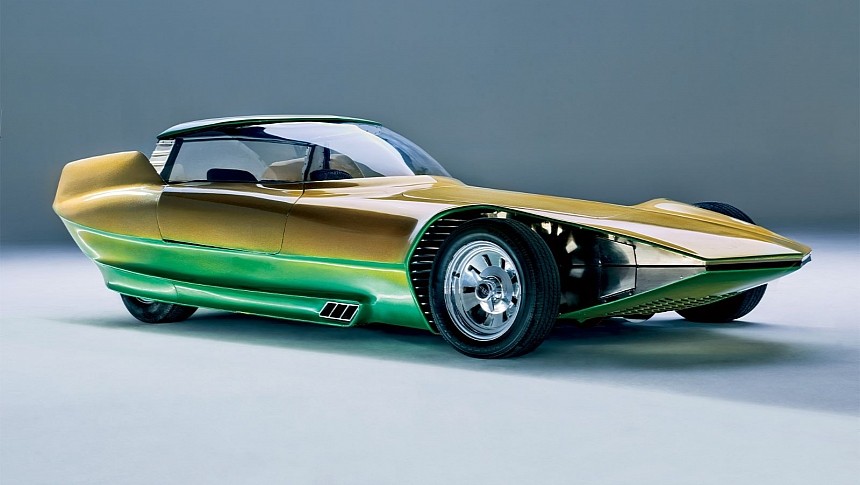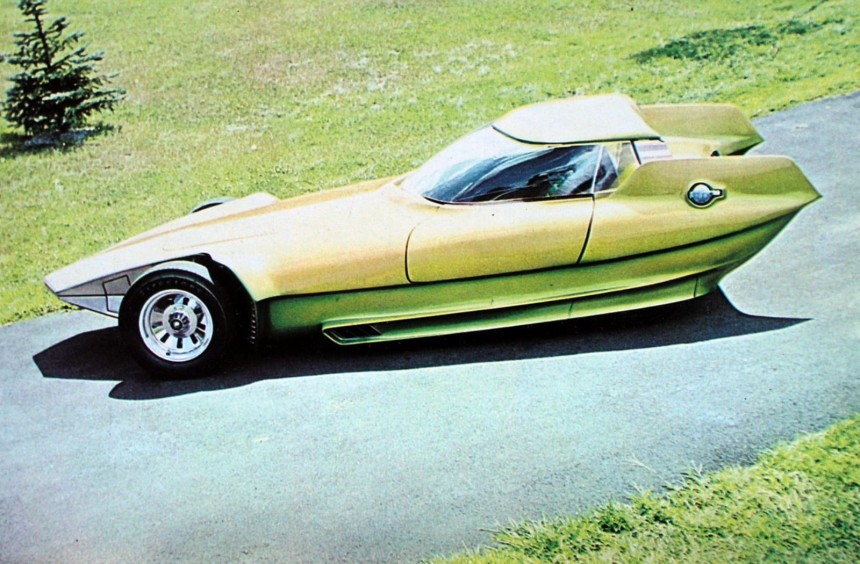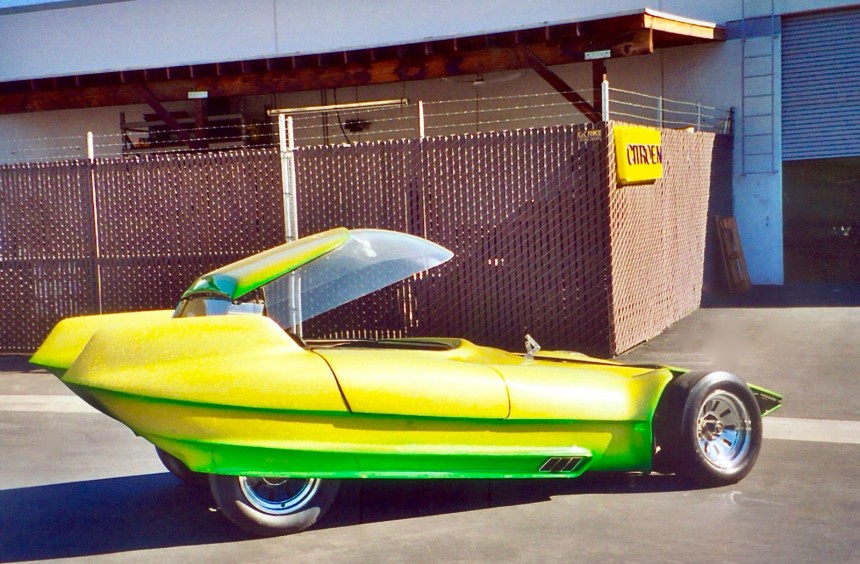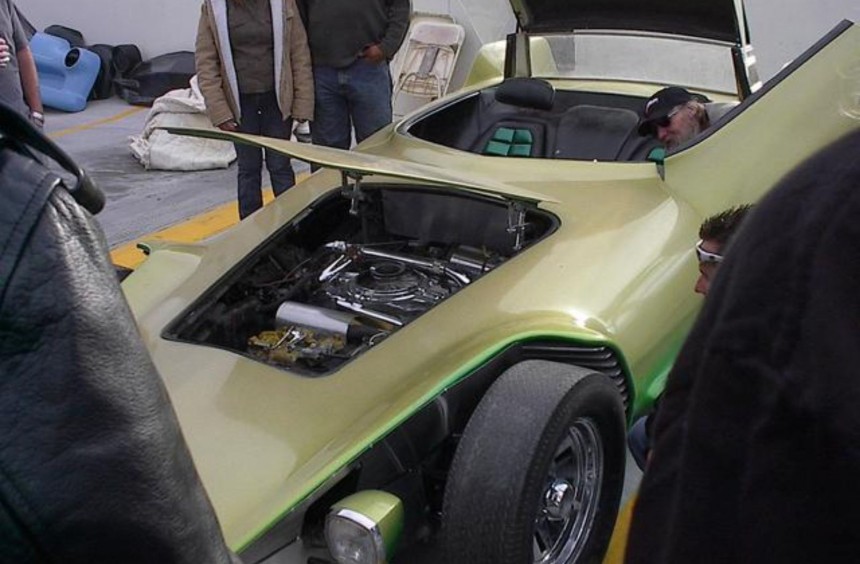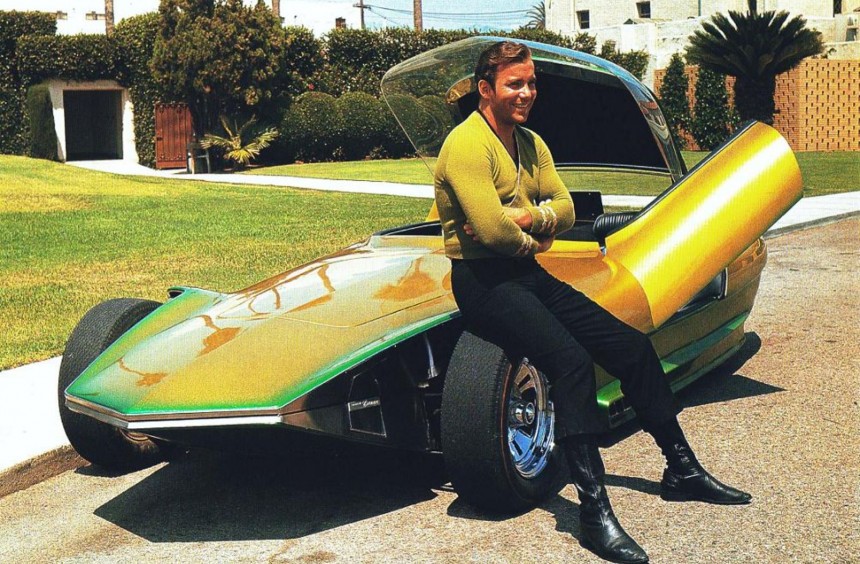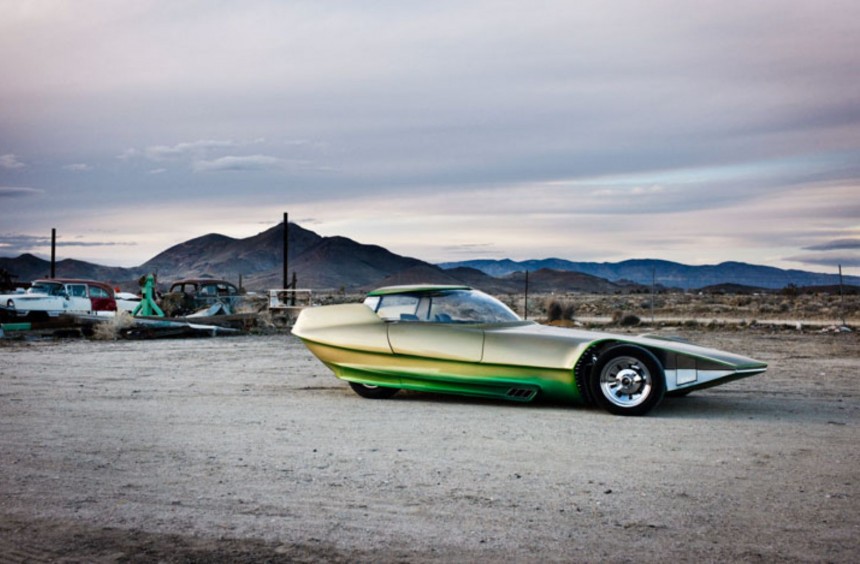Based on a Citroen chassis, powered by a Chevy flat-six, and donning a handbuilt body that looks like a spaceship, The Reactor is an automotive masterpiece that deserves to be rediscovered.
The sixties were arguably the greatest years for the American automotive industry.
Most of the country's manufacturers built high-quality cars that kept imports at bay. Moreover, performance enthusiasts were treated to awesome, high-powered super cars (aka muscle cars) that they could actually afford.
The decade also marked the evolution of the hot rod movement, with seasoned builders and bright young talents developing some of the most legendary custom cars ever.
Among the legendary customs born during the sixties, arguably the most breathtaking and futuristic was The Reactor.
Born on June 16, 1927, in Springfield, Missouri, Gene Winfield and his family moved to California when he was two.
Growing up in the Sunshine State, Winfield witnessed the birth of the hot rod movement, and since he fell in love with cars from an early age, he became part of its evolution.
In the early fifties, he opened a custom shop in Modesto and started working on special projects.
A decade later, he was known nationwide for the innovative "Winfield Fade" - a painting technique that combines two fading candy colors - and for his futuristic customs, the most famous of which became The Reactor.
Completed in 1965 and initially called The Autorama Special, the legendary custom was commissioned by Joe Kizis, an East Coast promoter, who organized the annual Autorama, a rod and custom car show in Hartford, Connecticut.
The Space Age companion to The Flintstones animated series, The Jetsons, originally aired during the sixties but was also popular when I was growing up in the nineties.
In the series, the characters used flying cars with aggressive fins and canopy tops. Though it didn't fly and wasn't directly inspired by the Jetsons, the custom looked like a fully functional, real-life car from cartoon.
The idea for the futuristic look was sketched by Winfield shortly after receiving $20,000 from Kizis to build a show car for the latter's event, but the final design was the work of Art Center College of Design graduate Ben Delphia.
Handbuilt out of aluminum panels that Winfield gas-welded together, the car's bespoke bodywork featured a rear-hinged glass canopy and two swan-wing-style doors - all electronically operated.
A mix between a traditional hot rod and a spaceship, it had a long, low-slung, wedge-shaped front end with exposed wheels, while the slightly taller finned tail was narrow and hid the rear wheels.
The Reactor was equally "Jetsonesque" under the canopy. It received two custom bucket seats wrapped in leather, a central console riddled with switches for all the electronics, and a Ford-inspired, "Wrist-Twist" yoke-style steering wheel with pistol grips.
The wide front/narrow rear look was achieved using an existing chassis from a mass-produced model. However, the choice was quite surprising: the innovative Citroen DS.
Despite several modifications to the chassis, the French car's subframes and the advanced, fully independent, hydropneumatic self-leveling suspension system were retained.
That meant the car could be raised and lowered at the flip of a switch, allowing it to sit four to nine inches (101-228 mm) off the ground.
But apart from the eye-catching effect, the suspension provided an extremely smooth ride, and although it was a show car, the custom handled very well.
Also borrowed from the DS was the three-speed automatic transmission, but it was not connected to the original French engine.
To achieve the low-slung look and give the car more power, Winfield linked the Citroen transmission to Chevy's most atypical engine, the flat-six that powered the Corvair.
The optional turbocharged version used in the range-topping Corsa, the engine didn't receive any power-enhancing upgrades, so it was rated at 180 hp.
Finished in less than ten months, the car made its scheduled debut at the 1965 edition of the Connecticut Autorama, donning a special Winfield Fade paint that mixed an eye-popping Metalflake shade of gold and green.
After the event, the car appeared at several East Coast shows and became known as The Reactor.
In 1966, Winfield brought it back to California and entered the car in the prestigious Grand National Roadster Show, where it won the Tournament of Fame Award.
That year, the renowned fabricator also decided to take his masterpiece to Hollywood. With no Tinseltown connections, he put the car on a trailer and began knocking on the gates of every famous movie studio to see if anyone was interested.
Most gates remained closed, but he eventually arranged a meeting with the transportation coordinator from 20th Century Fox Studios.
A few weeks later, The Reactor was offered a role in the fantasy sitcom Bewitched. That was the start of a successful acting career that included appearances in famous TV shows like Star Trek, Batman, and Mission: Impossible.
In the years that followed, the car's success earned Winfield additional contracts with studios, and he created other custom movie cars.
While Gene Winfield had temporary custody of The Reactor and managed its Hollywood endeavors, Joe Kizis was the car's owner.
After its acting career was over, it was returned to Kizis. It's unclear whether or not it remained in Kizis's possession in the decade that followed, but we know that The Reactor ended up rusting away in a storage facility.
During the late 1990s, Winfield tracked down his most famous creation and restored it in time for the 50th edition of the Grand National Roadster Show.
Today, the show rod still belongs to its creator and makes sporadic appearances at auto shows nationwide.
Though only some people are familiar with its fascinating story, The Reactor is still as captivating today as it was six decades ago.
A part of custom car history, it deserves to be remembered and celebrated.
We recommend watching the YouTube video below by RideswithChuck with Chuck Derer for a virtual tour of this legendary custom.
Most of the country's manufacturers built high-quality cars that kept imports at bay. Moreover, performance enthusiasts were treated to awesome, high-powered super cars (aka muscle cars) that they could actually afford.
The decade also marked the evolution of the hot rod movement, with seasoned builders and bright young talents developing some of the most legendary custom cars ever.
Among the legendary customs born during the sixties, arguably the most breathtaking and futuristic was The Reactor.
Gene Winfield's masterpiece
Growing up in the Sunshine State, Winfield witnessed the birth of the hot rod movement, and since he fell in love with cars from an early age, he became part of its evolution.
In the early fifties, he opened a custom shop in Modesto and started working on special projects.
A decade later, he was known nationwide for the innovative "Winfield Fade" - a painting technique that combines two fading candy colors - and for his futuristic customs, the most famous of which became The Reactor.
Completed in 1965 and initially called The Autorama Special, the legendary custom was commissioned by Joe Kizis, an East Coast promoter, who organized the annual Autorama, a rod and custom car show in Hartford, Connecticut.
A futuristic custom that looked like it came from The Jetsons
In the series, the characters used flying cars with aggressive fins and canopy tops. Though it didn't fly and wasn't directly inspired by the Jetsons, the custom looked like a fully functional, real-life car from cartoon.
The idea for the futuristic look was sketched by Winfield shortly after receiving $20,000 from Kizis to build a show car for the latter's event, but the final design was the work of Art Center College of Design graduate Ben Delphia.
Handbuilt out of aluminum panels that Winfield gas-welded together, the car's bespoke bodywork featured a rear-hinged glass canopy and two swan-wing-style doors - all electronically operated.
A mix between a traditional hot rod and a spaceship, it had a long, low-slung, wedge-shaped front end with exposed wheels, while the slightly taller finned tail was narrow and hid the rear wheels.
The Reactor was equally "Jetsonesque" under the canopy. It received two custom bucket seats wrapped in leather, a central console riddled with switches for all the electronics, and a Ford-inspired, "Wrist-Twist" yoke-style steering wheel with pistol grips.
Based on a Citroen and powered by Chevt's most atypical engine
Despite several modifications to the chassis, the French car's subframes and the advanced, fully independent, hydropneumatic self-leveling suspension system were retained.
That meant the car could be raised and lowered at the flip of a switch, allowing it to sit four to nine inches (101-228 mm) off the ground.
But apart from the eye-catching effect, the suspension provided an extremely smooth ride, and although it was a show car, the custom handled very well.
Also borrowed from the DS was the three-speed automatic transmission, but it was not connected to the original French engine.
To achieve the low-slung look and give the car more power, Winfield linked the Citroen transmission to Chevy's most atypical engine, the flat-six that powered the Corvair.
The optional turbocharged version used in the range-topping Corsa, the engine didn't receive any power-enhancing upgrades, so it was rated at 180 hp.
From the show car circuit to Hollywood
After the event, the car appeared at several East Coast shows and became known as The Reactor.
In 1966, Winfield brought it back to California and entered the car in the prestigious Grand National Roadster Show, where it won the Tournament of Fame Award.
That year, the renowned fabricator also decided to take his masterpiece to Hollywood. With no Tinseltown connections, he put the car on a trailer and began knocking on the gates of every famous movie studio to see if anyone was interested.
Most gates remained closed, but he eventually arranged a meeting with the transportation coordinator from 20th Century Fox Studios.
A few weeks later, The Reactor was offered a role in the fantasy sitcom Bewitched. That was the start of a successful acting career that included appearances in famous TV shows like Star Trek, Batman, and Mission: Impossible.
In the years that followed, the car's success earned Winfield additional contracts with studios, and he created other custom movie cars.
A legend reborn
After its acting career was over, it was returned to Kizis. It's unclear whether or not it remained in Kizis's possession in the decade that followed, but we know that The Reactor ended up rusting away in a storage facility.
During the late 1990s, Winfield tracked down his most famous creation and restored it in time for the 50th edition of the Grand National Roadster Show.
Today, the show rod still belongs to its creator and makes sporadic appearances at auto shows nationwide.
Though only some people are familiar with its fascinating story, The Reactor is still as captivating today as it was six decades ago.
A part of custom car history, it deserves to be remembered and celebrated.
We recommend watching the YouTube video below by RideswithChuck with Chuck Derer for a virtual tour of this legendary custom.
